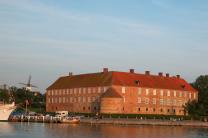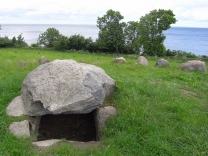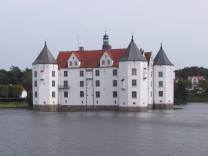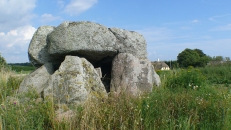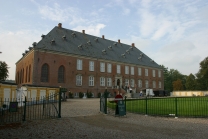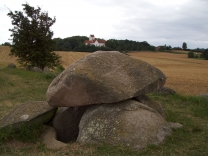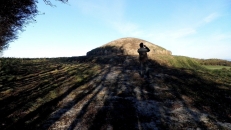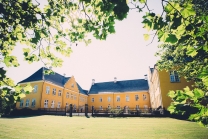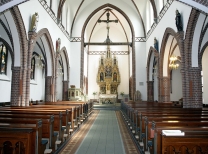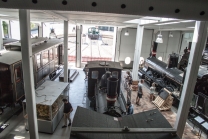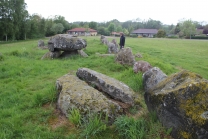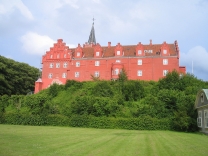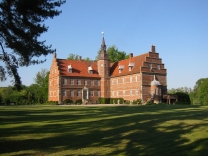Augustenborg Castle
No video yet
Augustenborg Palace
Augustenborg Palace (or Augustenborg Castle; Danish: Augustenborg Slot, German: Schloss Augustenburg) is a Rococo-style palace in the southwestern part of Augustenborg, Als Island, Denmark, overlooking Augustenborg Fjord. The palace owes its name to Duchess Auguste (1633–1701). Augustenborg gave its name to the House of Schleswig-Holstein-Sonderburg-Augustenburg, the last member of which was Duke Christian August II (1798–1869).
History
FacadeThe original half-timbered manor house was built in 1660-4 by Ernest Günther, the first Duke of Augustenborg, after he bought the village of Stavensbøl and demolished it for the land. The one-storey, red-roofed buildings around the outer courtyard were added from 1733 while the main three-winged building, replacing the original manor, was built from 1770 to 1776 in full symmetry, a fine example of Baroque architecture.
With its yellow-painted walls and blue-tiled roof, the wings gradually increase in height up to the central section. The three central bays of the facade protrude as an avant-corps three storeys high. Inside a beautiful entrance hall was finished in white-painted stucco by the Italian decorator Michel Angelo Taddei (1755–1831). Taddei also worked on the interior of the two-storey Baroque chapel in the building's northern wing, adding a Rococo altarpiece with an integrated pulpit as well as decorations along the vaults and walls of the nave. During the same period, much of the town was regenerated. The palace building underwent further renovation in the 1920s.Hans Christian Andersen spent two weeks at the palace in the autumn of 1844 and wrote The Little Match Girl when he visited the castle.
During the First Schleswig War (1848–50), Christian August II, the last duke to live in the palace, left Augustenborg as a result of his close relations with Germany. Thereafter the building was first used as a barracks and from 1878 as a seminary for women.
In 1921, Augustenborg was purchased by the Danish state. It was fitted out as a hospital in 1927–28 and since 1932 has been used as a psychiatric hospital. There is an exhibit...






